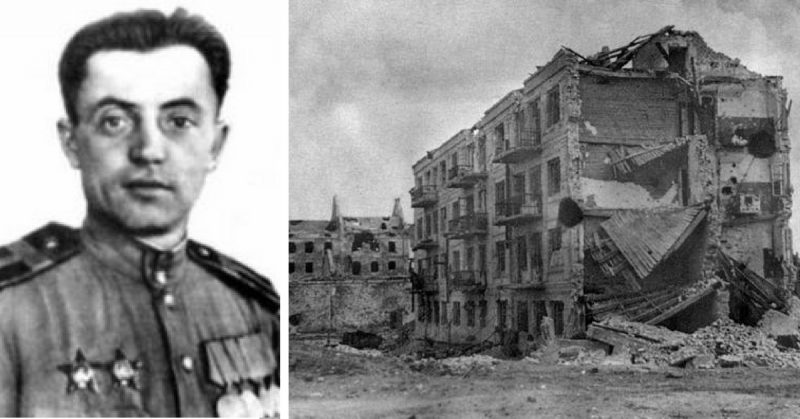In the Russian city of Volgograd today, one of the largest statues in the world stands atop Mamayev Kurgan, a hilltop that changed hands a multitude of times during WWII, or, as it is known in Russia, “The Great Patriotic War.” The statue, named “The Motherland Calls,” is one of many memorials in the city, known as Stalingrad during the war.
Another of the major memorials are the “State Historical and Memorial Preserve of the Battle of Stalingrad,” better known as just the “Stalingrad Museum,” which is a huge domed memorial to the epic battle that took place here in 1942-43.
Just across the square from the Stalingrad Museum is a memorial that is easily missed if you don’t know what you’re looking for. A simple re-created brick wall, done in a muscly Soviet style (if one can say that about a wall), marks the location of a building that maybe epitomizes the Soviet struggle for Stalingrad in a way that large statues and museums cannot. This is the location of “Pavlov’s House.”
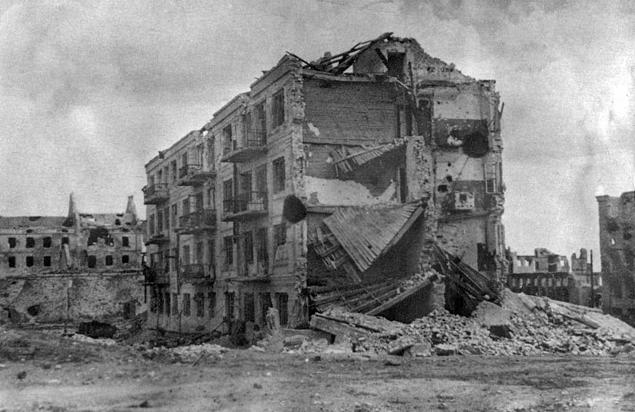
In the West, most people were quite ignorant of the monumental scale of the Stalingrad battle until the end of the Cold War. Even then, most people in America have never been familiar with many of the smaller heroic events that took place in the Soviet fighting of WWII. That is to be expected. One pays attention to the losses and heroes of one’s own country.
Russian citizens are likely not too familiar with the D-Day assault at Pointe du Hoc or the stand of the 101st at Bastogne. Still, perhaps no one place epitomizes a battle as much as Pavlov’s House.
In the late summer of 1942, the German Sixth Army entered Stalingrad, with the aim of cutting the Soviet supply lines on the Volga River. Stalingrad was also a major industrial city, where the Soviets were building tanks and sending them into battle. So badly were they needed at the front, the were often sent without paint. Lastly, Hitler had it in his mind that taking Stalingrad would be a personal blow to the ego and prestige of the Soviet leader, Josef Stalin, whose name the city carried.
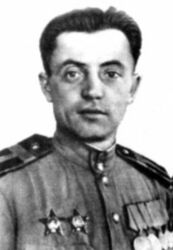
Within a short time, the Germans controlled almost ninety percent of the city. Fighting was beyond intense and especially vicious. It was a battle where civilians lived in basements (Stalin had forbidden most to leave, figuring that the Red Army would fight harder if they stayed), combat raged in sewers, snipers fought duels, and virtually no quarter was given or asked for.
The only territory controlled by the Soviets was along the riverbank in the center of the city and a small pocket in and near the Red October Tractor Factory. The factory was really a battle of its own with casualties on both sides almost equaling American losses during the ten years of Vietnam. Supplies could only be brought in by boat across the river, under German shell fire and air attack.
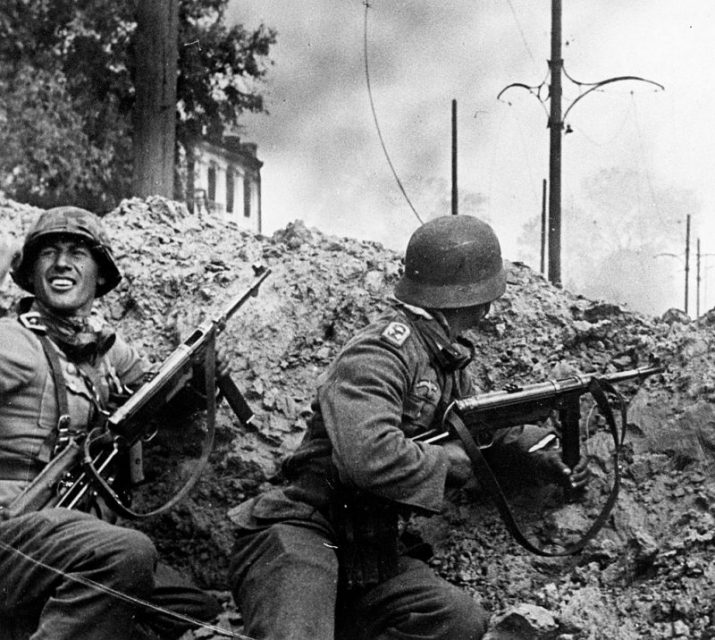
In the forward Soviet lines, a small bulge was created when Sergeant Yakov Pavlov (1917-1981) moved forward into a small apartment building with four other men and made it a fortress. Some thirty-odd men of Pavlov’s unit had already been killed making their way to the building.
The sergeant realized the building’s location dominated the area – it had a long line of sight on three sides, and would be a protective buffer for the shoreline and supply area of the Volga located just a few hundred meters away. Relaying information back to Soviet headquarters, Pavlov’s men were reinforced by some twenty to thirty men under Lieutenant Ivan Afanasiyev. Pavlov and Afanasiyev would lead the defense of the building for the almost next sixty days.
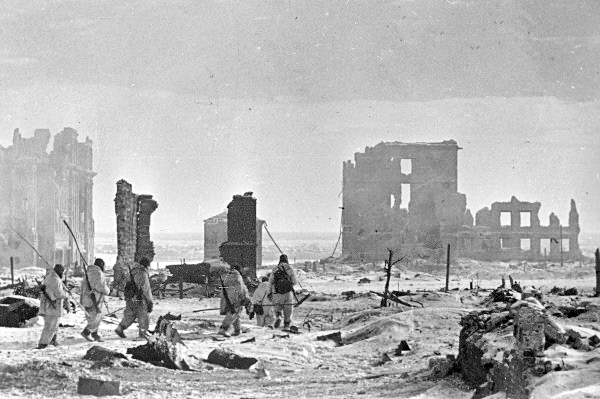
Civilians lived in the cellar. In an article in the Russia Times in 2010, Zinaiva Andreeva told of her experience:
“I was born here and I was in this house all 58 days until it was liberated…Soldiers helped us, there was a tunnel between the mill and the house and they mixed soil with grains and made bread for us. That was our food.”
Pavlov, Afanasiyev and his men placed machine guns in corners of the building protecting all approaches. On the roof, Pavlov himself is credited with disabling a dozen German tanks with the Soviet PTRS anti-tank rifle. A pre-war development, the PTRS was found to be virtually useless on tanks but did have some effectiveness against other lighter vehicles. However, when fired from above into the thin roof armor of German tanks, it was quite effective.
Barbed-wire was laid out all around the house at night, under almost constant fire, as were anti-personnel and anti-tank mines. Grenades were brought in by the crate load through tunnels dug under the house leading back into Soviet territory. German assaults were met with raining Soviet grenades from the four stories of the former apartment building.
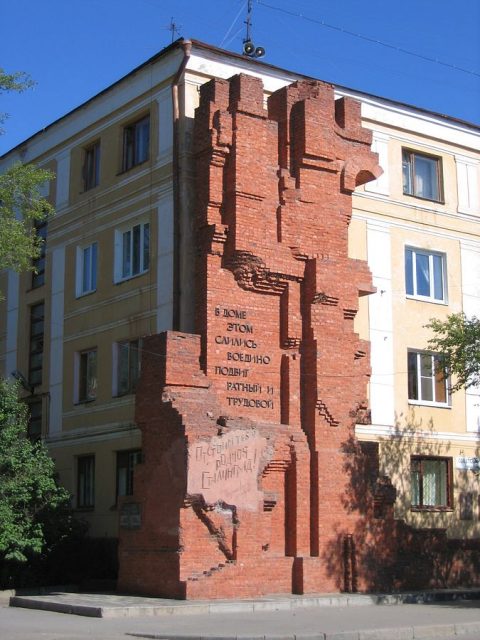
Some of the men that had originally occupied the house were killed during the battle, to be replaced by others, but a surprising number of the original group survived the fighting. They slept on floors or old insulation while the Germans kept firing to keep them awake.
An unverified but likely story, as happens in many battles, has it that many times during the battle, the Red Army men on the lower floors had to venture out to push down the walls of German bodies outside the house – they were blocking the Soviets’ line of sight.
No one knows how many German assaults took place during the two months that Pavlov’s men held out – it might have numbered a hundred or more. The position was that critical. German maps had the house labeled a “fortress”, and grossly over-estimated the number of Soviets inside based on the ferocity of the resistance.
On November 25th, 1942, the building was relieved and the Soviet lines moved forward. Pavlov and some of his men were awarded the highest citation in the Red Army, the “Hero of the Soviet Union” medal. Pavlov went on to survive the war and ended his army career as a lieutenant in 1946 and became a member of the Supreme Soviet of the Russian Republic. He died in 1981.
